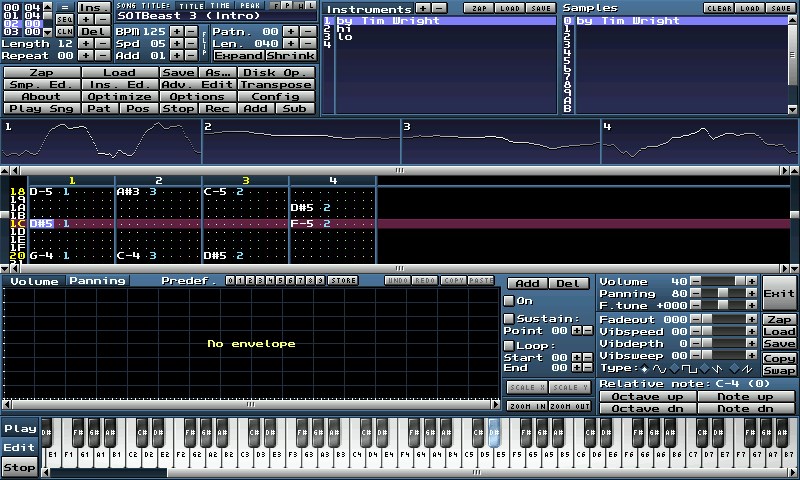

Each row can have one note in every track. A pattern consists of several rows (64 by default, 1024 maximum) and is divided to columns ("tracks"). Patterns are essentially sheets of music where the musician is able to arrange the actual musical score. The program also features a little Nibbles clone and in-software documentation for all the features. The pattern editor can be switched to sample/instrument editors. The screen consists of a pattern editor in the lower half, while the upper half features an instrument selector on the right, and the general module settings and some oscilloscopes. The FT2 interface is largely inspired by the looks of Amiga's ProTracker.
#Milkytracker latency code
The code is now available for collaboration on GitHub Architecture and features Demoscene
Shortly after the release, an official FreeBSD port was created. In July 2018, he released the source code of his FT2 continuation, later under the 3-clause BSD license, along with compile instructions for Linux on his website. On April 22, 2017, an alpha build of the FastTracker II clone was released on the author's homepage for Windows and macOS. Sørensen stated that he based his clone partly on the original FT2 source code. See also the Clone section below.Īfter development of FT2 was abandoned, a project led by developer Olav Sørensen to accurately re-implement FT2 in C for modern platforms using SDL 2 was started. In later years many other trackers tried to follow up on the legacy of FT2, a notable example being MilkyTracker, with special playback modes available for improved Amiga ProTracker 2/3 compatibility. Legacy Īfter the announcement that support and development for FT2 would be stopped, Ruben Ramos Salvador (BakTery) started working on a FastTracker 3 that is now known as Skale Tracker, available for both Windows, Linux and online. Unfortunately this world is nothing like that," signed by Vogue. If this was an ideal world, where there was infinite time and no need to make a living, there would definitely be a multiplatform Fasttracker3. On May 23, 1999, Starbreeze productions announced on their website that "FT2 has been put on hold indefinitely. While not an official release it was made later available also from Starbreeze's website. This version had a few new usability additions, such as the possibility to exit previously "stuck" windows by only using the mouse but broke support for the Gravis Ultrasound card. A newer version 2.09 was under test as closed beta and became available to the public by Andreas Viklund's website in 1999. The last stable release of FastTracker 2 was version 2.08, released in August 1997.

In November 1994, FastTracker 2 was released to the public, with support for the Gravis Ultrasound sound card. Through 1994, the musicians in Triton released some songs in a new multichannel "XM" format, accompanied by a pre-release, standalone player. The whole editor was a single 43 KiB DOS executable.
#Milkytracker latency Pc
It was only compatible with Creative Labs' SoundBlaster series of sound cards, which were most popular on the PC at that time.
#Milkytracker latency mod
This tracker was able to load and save standard four channel MOD files, as well as extended MOD files with six or eight channels (identical to standard MOD files, aside from the extra channel data and ID markers "6CHN" or "8CHN").


 0 kommentar(er)
0 kommentar(er)
